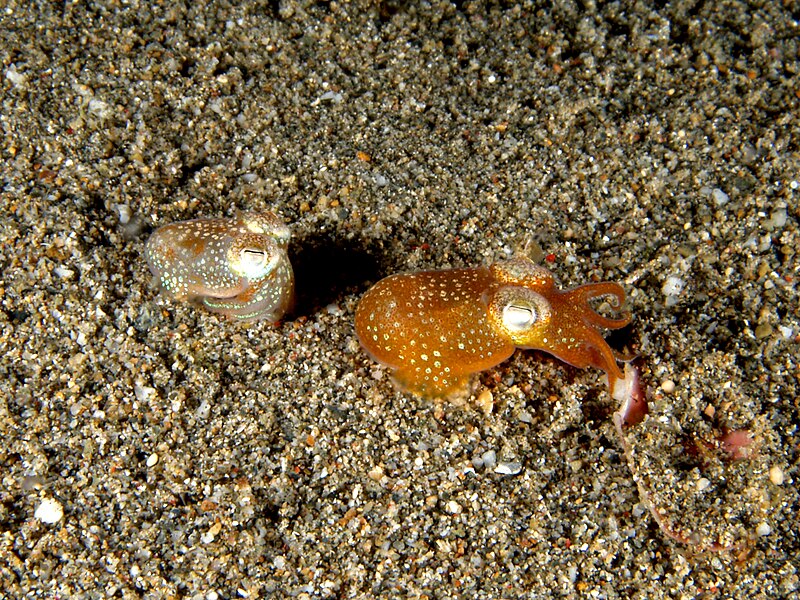 It’s no secret that cephalopods have amazing skill at camouflaging themselves to avoid predation. You may have seen the unique tactics of the mimic octopus in recent years, or you may have been lucky enough to see a squid or cuttlefish in action, changing color and skin texture with lightning-quick speed. Their abilities are intriguing to us and necessary for their survival in the big ocean blue.
It’s no secret that cephalopods have amazing skill at camouflaging themselves to avoid predation. You may have seen the unique tactics of the mimic octopus in recent years, or you may have been lucky enough to see a squid or cuttlefish in action, changing color and skin texture with lightning-quick speed. Their abilities are intriguing to us and necessary for their survival in the big ocean blue.
I recently read an article discusses the relationship between the Hawaiian Bobtail Squid (Euprymna scolopes) and a light-producing bacteria known as Vibrio fischeri. The Bobtail Squid is a small, shallow-water squid that hides in the sand during the day and comes out at night to find food. This cephalopod has found a way to help it hide itself from predators while it hunts, by attracting and utilizing these glowing bacteria! The squid uses a special organ to attract the luminescent bacteria, which are used to populate the squid’s underside. The bacteria subtly lights up creating a hue that is about the same intensity as the moonlight coming through the water’s surface, eliminating the dark shadow that a predator below would normally see. The bacterial coating makes the squid almost invisible as it looks for its food! This is similar to the counter-shading found in many fish (dark on top, light on bottom coloration makes them harder to see) but way cooler!
A video states that researchers are studying the relationship between the squid and the bacteria for possible applications in human/bacterial interactions in the medical or military technology. Its no Klingon Cloaking Device….but its getting there!
Thanks for reading,
Eileen
Hawaiian Bobtail Squid image referenced from wikipedia and originally posted by Nhobgood
 That Fish Blog – Aquarium Advice and Information
That Fish Blog – Aquarium Advice and Information


